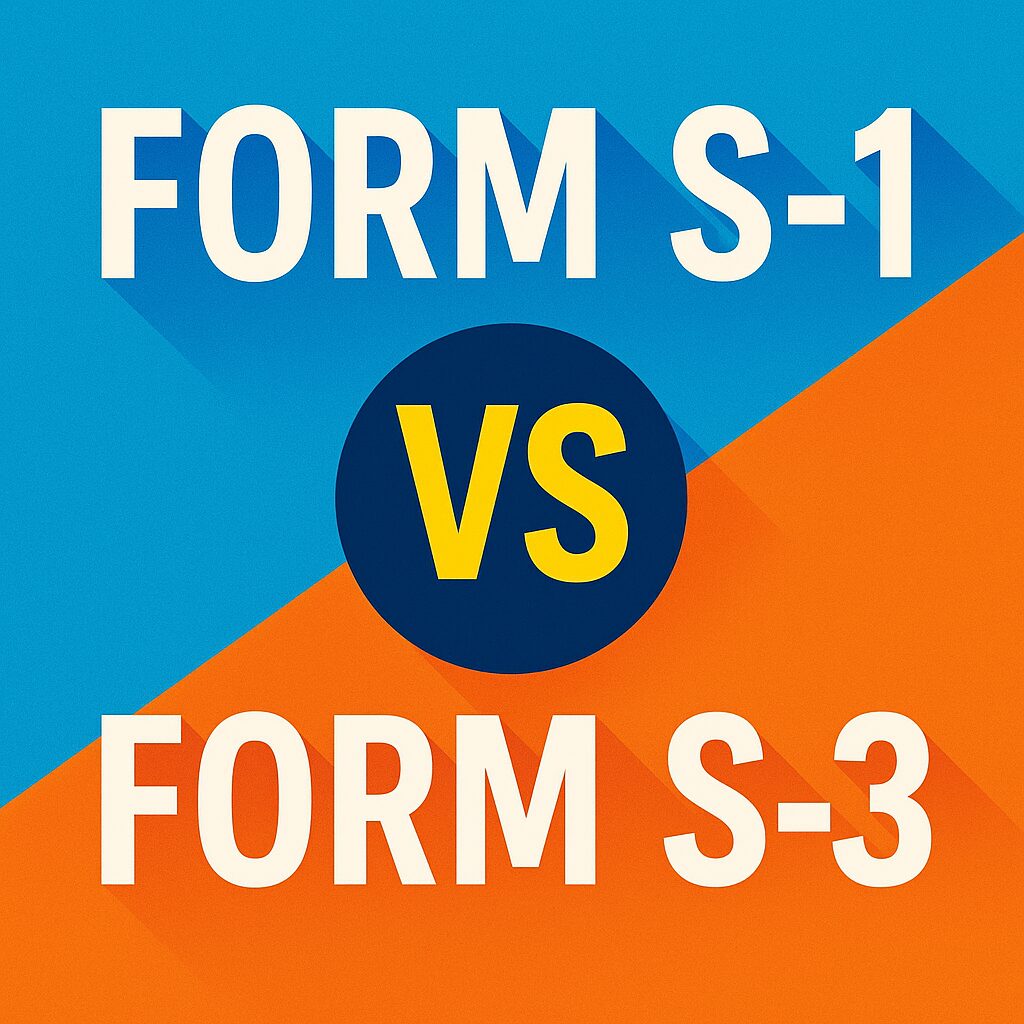Form S-1 vs. Form S-3: A Practitioner’s Guide to Eligibility, Disclosure, and Incorporation by Reference (2025)
Posted onForm S-1 and Form S-3 are the two most common registration statements under the Securities Act of 1933. While both forms register securities for sale to the public, they differ dramatically in eligibility, disclosure format, and incorporation by reference options. Form S-1 is the long-form registration statement, available to all issuers, and requires a full standalone prospectus. Form S-3 is the short-form for seasoned reporting issuers that meet eligibility criteria, allowing heavy reliance on incorporation by reference.
Eligibility Comparison
Form S-1 is available to all issuers, including IPO candidates and smaller reporting companies, and can include forward incorporation for SRCs under Instruction VII. Form S-3, by contrast, is limited to issuers with at least 12 months of Exchange Act reporting history, a filed annual report, and timely filings. Primary offerings under S-3 require a $75M float or baby shelf eligibility under I.B.6.
Incorporation by Reference
Form S-1 allows backward incorporation and forward incorporation for SRCs if they are current and timely in their filings. Form S-3 automatically incorporates the issuer’s most recent Form 10-K and subsequent Exchange Act filings, updating continuously.
Required Disclosures by Form
Form S-1 includes full Regulation S-K and S-X disclosures, including Items 101, 103, 303, 402, 403, and 404, as well as exhibits under Item 601. Form S-3 relies on incorporated filings, and its prospectus usually contains only key offering information, use of proceeds, risk factors, and incorporation statements.
Filing Checklists
Form S-1 Checklist: verify eligibility, list incorporated filings, ensure Reg S-K compliance, and add Item 512(b) undertakings. Form S-3 Checklist: confirm General Instruction I eligibility, prepare short-form prospectus, and identify all incorporated filings.
Practical Considerations
Form S-1 suits IPOs and smaller issuers needing full disclosure; Form S-3 suits seasoned filers for faster access to capital. SRCs benefit from forward incorporation flexibility, bridging the gap between S-1 and S-3 efficiencies.
Related Resources
- SEC Registration Statements: Form S-1 Guide
- Form S-3 Shelf Registration & Baby Shelf Rules
- Rule 144 and Resale Restrictions
- Going Public Without an Underwriter
- FINRA Form 211 and Market Maker Requirements
Visit https://www.securitieslawyer101.com for more.
If you have questions about taking your company public or would like to speak with a Securities Attorney, Hamilton & Associates Law Group, P.A. is ready to help. Our Founder, Brenda Hamilton, is a nationally known and recognized securities attorney with over two decades of experience assisting issuers worldwide with going public on the Nasdaq, NYSE, and OTC Markets. Since 1998, Ms. Hamilton has been a leading voice in corporate and securities law, representing both domestic and international clients across diverse industries and jurisdictions. Whether you are taking your company public, raising capital, navigating regulatory challenges, or entering new markets, Brenda Hamilton and her team deliver the experience, strategic insight, and results-driven representation you need to succeed.
To speak with a Securities Attorney, please contact Brenda Hamilton at 200 E Palmetto Rd, Suite 103, Boca Raton, Florida, (561) 416-8956, or by email at [email protected].
Hamilton & Associates | Securities Attorneys
Brenda Hamilton, Securities Attorney
200 E Palmetto Rd, Suite 103
Boca Raton, Florida 33432
Telephone: (561) 416-8956
Facsimile: (561) 416-2855
www.SecuritiesLawyer101.com







